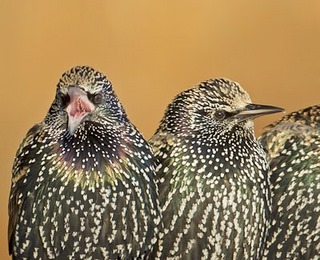I scored a hat-trick today, my third day in a row with a pleasant days birding with JB/BT to end a pleasant years birding as is always the case....what would I be without my birding!
Barnacle Geese. John James Audubon.
We first paid a brief visit to Freeman's Pools where a Roe Deer was soon seen, ears pricked and the staring eyes of a creature which hears and sees things a mile away. As noted in my post yesterday the pools remain frozen and deserted. On Aldcliffe Marsh 12 Barnacle Geese seen again with the c.650 Greylag I should have been able to see yesterday but could'nt, along with today's uncounted Canada Geese and surprisingly just 4 Pink-footed Geese.
At Conder Green it was good to find the Spotted Redshank not seen since the big freeze, 5 Little Grebe were all I noted here today which prompts me to point out, if you really need to see a fully comprehensive list of today's sightings then all you need to do is visit HERE to see JB's list, always remembering JB doesn't see all that I see, and I don't see all that JB sees and therefore our records don't fully tally.
At Glasson Dock on the Lune Estuary c.400 Bar-tailed Godwit were the only birds of note at a pretty void section of the river. On Jeremy Lane, 3 Whooper Swans including a juvenile. On Moss Lane, at least 350 Common Gull were of note. At Cockersands, c.90 Linnet still at/on the set-aside, 5 Black-tailed Godwit and a solitary Grey Plover posed the question....where are all the waders?
Thanks for the photograph Mike....On Gulf Lane it's always good to see Grey Partridge anywhere as we did here today in two coveys of eight and five. Pilling Marsh produced 3 Little Egrets - the first in many a days birding recently - with just c.120 Pink-footed Geese, and a smart little Merlin distant and looking not much bigger than a Mistle Thrush. At Fluke Hall c.6,500 Pink-footed Geese at close quarters allowed some detailed scrutiny.
BT's car seems to go into auto pilot from here every week and takes us to the feeding station on Bradshaw Lane where - whilst I tried to get to grips with a distant 'dark' raptor and failed to - JB recorded 8 Corn Bunting, 6 Yellowhammer, 30 Tree Sparrows and a Buzzard.
It was good to be out again with JB who surprised me to say it had been a month since he was last out with me....t'will soon be Easter John, and soon after that the summer with endless places to go to and endless birds to see.
A HAPPY NEW YEAR TO ALL BIRDS2BLOG'ERS....Whoever and wherever you are.
It was good to be out again with JB who surprised me to say it had been a month since he was last out with me....t'will soon be Easter John, and soon after that the summer with endless places to go to and endless birds to see.
A HAPPY NEW YEAR TO ALL BIRDS2BLOG'ERS....Whoever and wherever you are.











































